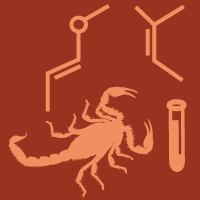Topic Menu
► Topic MenuTopic Editors

Environmental Toxicology and Human Health—2nd Edition
Topic Information
Dear Colleagues,
Environmental contamination has now become a major global issue with adverse effects on our health and food security. Humans and animals are being exposed to debilitating levels of contamination every day. Worldwide, air pollution causes millions of premature deaths annually, which are mainly caused by lung cancer, chronic obstructive pulmonary disease, stroke, heart failure, and respiratory infections. Moreover, according to the World Health Organization (WHO), 99% of humankind breathes air containing contaminants above the recommended levels. The United Nations has identified “a pollution-free planet” goal among its three pillars, in addition to climate change and biodiversity, for 2022–2025. To mitigate contamination and relieve the burden of pollution-related disease, we need to devise target-specific strategies. To that end, risk assessments of each chemical and natural contaminant and solid evidence from toxicity studies are of paramount importance. Meticulous efforts should be made to look into the possible mechanisms of action for each pollutant and detect their toxic potential and safe limits through in vitro approaches and comprehensive in vivo animal testing. Indeed, this topic will include environmental pollutants (such as heavy metals, pesticides, nanoparticles, micro-nanoplastics, indoor air pollutants, pharmaceuticals, and industrial toxicants) and their human health effects, risk assessments, the relationship of various diseases, and environmental pollutants. Human exposure to environmental pollutants may cause adverse effects such as neurotoxicity, carcinogenicity, infertility, and metabolic disorders. We welcome original research articles, reviews, and opinion pieces related to the proposed focus area.
Prof. Dr. Esref Demir
Prof. Dr. Sam Kacew
Topic Editors
Keywords
- environment and health
- risk assessment
- environmental pollutants
- cancer
- carcinogenesis
- toxicity
- biological effects
- molecular toxicology
Participating Journals
| Journal Name | Impact Factor | CiteScore | Launched Year | First Decision (median) | APC | |
|---|---|---|---|---|---|---|

Environments
|
3.7 | 5.7 | 2014 | 19.2 Days | CHF 1800 | Submit |

International Journal of Molecular Sciences
|
4.9 | 9.0 | 2000 | 20.5 Days | CHF 2900 | Submit |

Toxins
|
4.0 | 8.2 | 2009 | 18.4 Days | CHF 2700 | Submit |

Journal of Xenobiotics
|
4.4 | 6.0 | 2011 | 27.6 Days | CHF 1600 | Submit |

Metabolites
|
3.7 | 6.9 | 2011 | 14.4 Days | CHF 2700 | Submit |

J
|
- | - | 2018 | 37.2 Days | CHF 1200 | Submit |

Current Issues in Molecular Biology
|
3.0 | 3.7 | 1999 | 17.8 Days | CHF 2200 | Submit |

Toxics
|
4.1 | 6.4 | 2013 | 18.1 Days | CHF 2600 | Submit |

Preprints.org is a multidisciplinary platform offering a preprint service designed to facilitate the early sharing of your research. It supports and empowers your research journey from the very beginning.
MDPI Topics is collaborating with Preprints.org and has established a direct connection between MDPI journals and the platform. Authors are encouraged to take advantage of this opportunity by posting their preprints at Preprints.org prior to publication:
- Share your research immediately: disseminate your ideas prior to publication and establish priority for your work.
- Safeguard your intellectual contribution: Protect your ideas with a time-stamped preprint that serves as proof of your research timeline.
- Boost visibility and impact: Increase the reach and influence of your research by making it accessible to a global audience.
- Gain early feedback: Receive valuable input and insights from peers before submitting to a journal.
- Ensure broad indexing: Web of Science (Preprint Citation Index), Google Scholar, Crossref, SHARE, PrePubMed, Scilit and Europe PMC.
Related Topic
- Environmental Toxicology and Human Health (28 articles)


